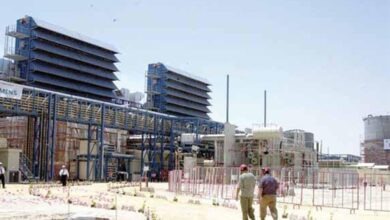Clean energy transformation in Kuwait faces a long journey
Kuwait, with about 7% of global oil reserves, aims to reach 22 gigawatts of renewable energy capacity by 2030 to offset its high emissions and oil production limitations.

• Renewable energy in Kuwait to reach less than 10% of total electricity by 2030. The country faces a hurdle in advancing large renewable projects like Al Shaqaya, despite ample solar and wind resources.
• Governance challenges and oil revenue dependence hinder Kuwait’s renewable energy progress.
• The value of renewable energy projects in Saudi Arabia exceeds $10 billion, followed by the UAE with $8 billion.
The road to clean energy transformation in Kuwait is long. A report by “Arabian Gulf Business Insight,” citing energy experts, stated that Kuwait still has a long way to go in moving forward with the clean energy transformation, despite the country’s announcement of a 20-year renewable energy strategy.
The report stated that Kuwait, which possesses about 7% of global oil reserves, is considered one of the countries producing the most emissions contributing to global warming, like other Gulf states. However, it aims to acquire renewable energy capabilities of about 22 gigawatts by 2030 to balance its lack of oil production capacity, which exceeds three million barrels per day.
Renewable energy
The report said that renewable energy in Kuwait is expected to represent less than 10% of its total electricity production by the end of 2030. However, analysts agree that Kuwait is still lagging behind in renewable energy projects.
Robin Mills, CEO of Qamar Energy Company, remarked that Kuwait’s problem lies in the failure to advance large renewable energy projects, particularly the Al Shaqayarenewable energy project. This is unfortunate, given that Kuwait not only has excellent solar energy resources but also possesses significant wind energy capabilities.
He added, “Since Kuwait also utilizes large quantities of imported fuel oil and liquefied natural gas, renewable energy sources will reduce air pollution and significantly cut costs.”
He continued, “Kuwait has the funds, incentives, and resources to catch up with other Gulf countries in the field of renewable energy. However, it needs to overcome its chronic problems related to project implementation.”
Governance challenges
For his part, Tadhg O’Donovan, chief energy scientist at Heriot-Watt University Dubai, stressed that governance challenges and historical dependence on oil revenues have contributed to Kuwait’s slow progress in the field of renewable energy.
Analysts at BPI, a subsidiary of Fitch Ratings, expect significant growth in solar energy capacity in the Middle East, increasing its global share from less than 1% in 2022 to 3% by 2033. They anticipate solar energy capacity to increase by 99 gigawatts over the next ten years, representing an average annual growth rate of 21%.
The report indicated that the UAE, Saudi Arabia, and Egypt are expected to lead the growth of solar energy projects. Additionally, Oman and Algeria have issued tenders for solar energy projects this year, with a total capacity of 780 megawatts.
Top 10 regional leaders in renewable energy projects
The report stated that Kuwait did not succeed in reaching the list of the top ten countries in the region in terms of the value of renewable energy projects under implementation.
According to data from Statista, the value of renewable energy projects in Saudi Arabia exceeds $10 billion, followed by the UAE with $8 billion, Egypt with $6 billion dollars, and Morocco with $3 billion dollars.













